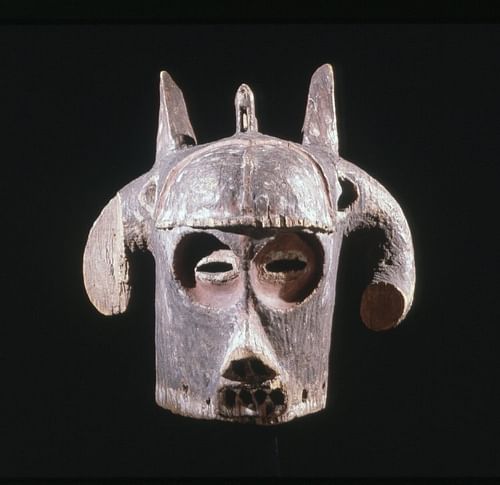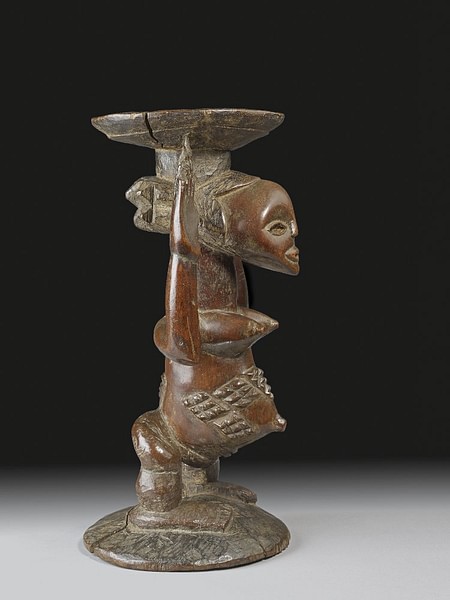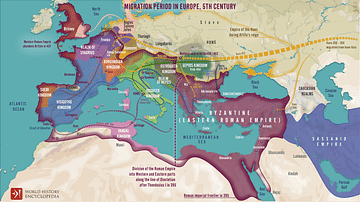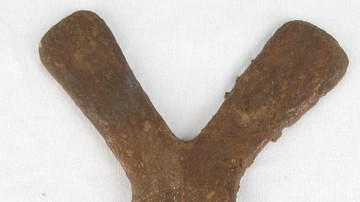
The Kingdom of Luba, located in central Africa, thrived from the 15th to 19th century CE and was the first such state in the Congo basin. Skills in ironworking and trade along the Lualaba river in such metals as copper permitted the Luba elite to form a kingdom which spread across and out from the Upemba Depression in what is today southern DR Congo. The Luba Kingdom prospered until it fell into the hands of Belgian colonialists in the late 19th century CE.
Origins
The origins of the Kingdom of Luba rose in central Africa around 1300 CE in the southern rain forests of the Shaba, spreading to cover the wet grasslands of the Lake Upemba Depression (in the southern part of today's Democratic Republic of the Congo, formerly known as Zaire). The Luba kings and oral traditions claimed a past connection with the Shaba area inhabited by the Iron Age Lualaba people. Lualaba sites, the earliest being Kamilamba, date to the 6-7th century CE, and they thrived thanks to local metal deposits, especially copper, which allowed them to trade with other central African peoples using the region's rivers.
The region shows evidence of agriculture prior to 1100 CE and involved the raising of such crops as red sorghum, millet, yams, bananas, beans, sugar-cane, and groundnuts. Rich agricultural land was only available in pockets and in-between these were large uninhabited areas used for hunting. This natural distribution explains why many small but independent chiefdoms sprang up in the region. There was also fishing in lakes and rivers, and the herding of animals such as pigs and horned cattle. Local metal deposits of iron and copper continued to be exploited. Crafts included pottery, basket-making, weaving and the production of salt, palm beer, and copper jewellery. There is evidence of trade and even early currencies in the form of cross-shaped copper ingots, shells, squares of raffia palm, and salt (in the 19th century CE, imported beads became the dominant currency). Luba trade extended to the forests of central Africa, as far south as Zimbabwe, and east to the coast, from where goods came and went across the Indian Ocean.

The UNESCO General History of Africa (Vol. IV) has this to say on the kingdom's origins:
The Luba kingdom was probably founded before 1500 by a certain Kongolo, near Kalongo, by the fusion of several patrilineal clans. Each clan headed by a chief or kiloto, the 'owner of slaves', recognised the king's authority. The king was surrounded by at least two dignitaries, the guardian of emblems, called inabanza, and the military chief or twite. The 'sacredness' or bulopwe of kingship was inherent in the blood which flowed in the veins of the reigning lineage.
(226)
According to oral legends, the first Luba king Kongolo (meaning Rainbow) was rather cruel but he was civilised by the teachings of a hunter, one Kalala Ilunga, who arrived from the east. This hunter slept with two sisters of the king and one of the children of this union, when grown up, left Luba and sought out his father who had by then left the kingdom. The hunter gave the prince an army and so he returned to depose his cruel uncle and establish just rule in the Kingdom of Luba. In some versions of the myth, Kongolo is killed by Kalala Ilunga and, while there is no nephew, there are two female-led rival tribes to the west. Either marriage or abdication accounts for the joining of these micro-kingdoms into the larger Luba kingdom.
The story of Luba's founding king may reflect the regional trade and spread of ideas that came with it, perhaps even the Bantu migration which had spread highly-developed language and technology from its origins in southwest Africa to the rest of the continent's interior. One of the emblems of Luba royal power was double iron bells, which show the ability to make sheet iron and to solder metals. These bells, produced throughout central Africa, are another indicator of the spread of ideas in the region.
Kingship & Government
Prior to c. 1500 CE, the Luba lineage was matrilineal, unlike almost all other societies in central equatorial Africa, but after this date, the Luba also adopted the patrilineal custom. Kings developed from landowners, the most influential of which were also priests of the spirits of the land. Through the further acquisition of neighbouring lands and the joining of small chiefdoms through marriages, these ruling figures developed into a nobility with a king at their head. As kings continued to combine ruling with religious duties, they became revered as sacred figures in themselves. The more agriculture and trade prospered, the greater the surplus of produce which then allowed the wealthier citizens to free themselves from labour and devote themselves to the building of systems of state governance. Land was grabbed from weaker neighbours, regular tribute (in goods or labour) was extracted from conquered tribes, and slaves were captured to further increase agricultural production and free more Lubans from the necessity to work. Criminals may also have been made into slaves. Thus, the infant Kingdom of Luba was born.

The UNESCO General History of Africa (Vol. V) describes the established pyramid of rule in the kingdom of Luba:
The organization of the Luba state corresponded to a pyramid of pyramids. At village level, households were linked by patrilineage. Relations between villages were also thought of as relations between lineages, although each district had a titled chief. Above this, the kingdom itself was ruled from the capital, whose very lay-out reflected this structure with royal quaters at its centre and quarters for titled officials of both sexes, separated according to their military or civilian function. A closed association, the bambudye, helped the king to rule. The king was not supposed to have a lineage or clan, although the office was normally handed down from father to brother or son. The king was at the same time above the political fray and yet linked by kinship to many of the district heads. He stood at the apex of the pyramid of pyramids of kinship. The title mulopwe signifies the indivisibility of power that could not be shared.
(295)
Religion
Religious practices, as elsewhere in Africa, developed as priests promised to promote the success of agriculture and fertility. Priests used magic and divination to impress their followers and there was a widespread reverence for dead ancestors and local spirits associated with natural features and phenomena. Not only did kings enjoy a reverence as sacred figures but also any persons holding authority, notably heads of families. Authority was further bolstered through the membership of secret societies whose members were the only ones privy to certain rites and rituals. Indeed, secret groups such as the bambudye, which advised the king, were so effective at keeping their secrets that we do not know today the precise details of their role and function.
Luban art indicates aspects of its religion. The kingdom's artists produced distinctive metal face masks which have cattle horns, likely a sign of magical powers and so associated with rulers. Another medium was hardwood, used to produce the handles of ritual axes which are covered in nodules and hold an elongated metal blade. Other art objects show the Luba wore tall headdresses and had prominent ritual scars.
Expansion
The Kingdom of Luba, with its heartland around Lake Boya, greatly expanded in the 18th century CE thanks to the king's army and one king in particular, King Kadilo, who reigned from c. 1700 CE. Consequently, in a gradual process, the state absorbed the Kingdom of Kikondja in the south, the Kingdom of Kalundwe in the west, and a number of tribes in the south-east of the region. This military conquest resulted in people leaving the region to maintain their independence, notably the peoples of the lower Luvua river basin who went on to found the Shila state near Lake Mweru. Another push for territorial expansion occurred in the first half of the 19th century CE, especially to the east towards Lake Tanganyika and the more northern stretches of the Lualaba River. The kingdom became such a success that peoples in the entire region of central and eastern Zambia and Malawi claimed their own kings were descended from those of the Luba. One neighbouring kingdom, located in the western Shaba, was particularly influenced in terms of traditions, institutions and symbols, this was the Rund Kingdom, founded c. 1500 CE. The two kingdoms would eventually form a two-way relationship in terms of cross-cultural exchange.
Decline
The kingdom continued on into the late 19th century CE but was then overwhelmed, like so many African cultures, by the arrival of the European colonialists. In Luba's case, their nemesis was the Belgians, who took over this part of Africa around 1885 CE and created what became known as the Belgian Congo (1908-1960 CE). A region constantly troubled by civil wars, it gained independence in 1960 CE and underwent several name changes as regimes rose and fell in quick succession. It became the Republic of the Congo (aka Congo-Leopoldville) from 1960-4 CE, the Democratic Republic of the Congo from 1964-71 CE, the Republic of Zaire from 1971-97 CE and finally today's Democratic Republic of the Congo in 1997 CE.





